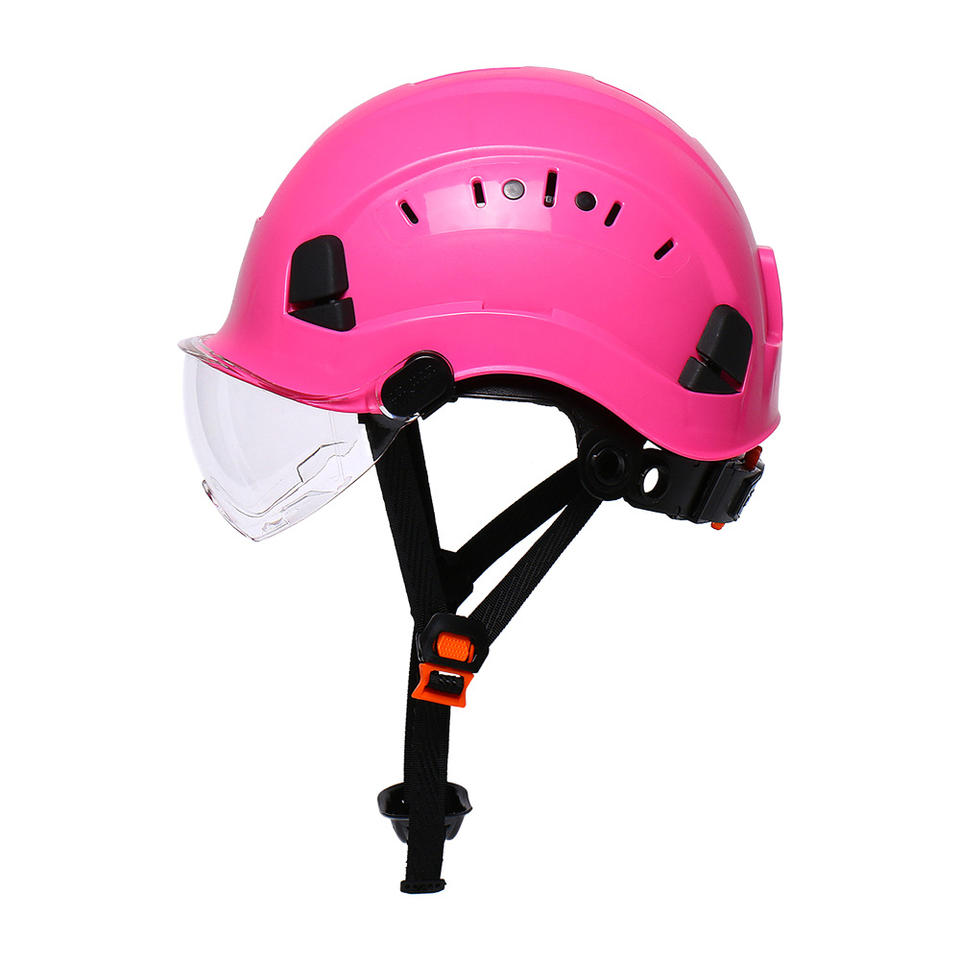Safety Helmet with Visor: Anti-Fog, ANSI Z89.1—Best Choice?
I spent last month talking to foremen and HSE managers about one small upgrade that’s quietly reducing eye injuries on jobsites: the safety helmet with visor. It’s not flashy. But it’s practical, fast to deploy, and workers actually wear it—big wins in the real world.

What’s moving the market
Two trends stand out: integrated eye protection and lighter-but-strong shells. Honestly, separate goggles are still common, but compliance drops when lenses fog or go missing. With an integrated visor, the PPE is always there. Meanwhile, ABS shells have gotten better—tough enough for construction and utilities, yet comfortable for long shifts.

Product snapshot: ABS Material Engineering Safety Helmets with Worker Visor
Built from impact-resistant ABS, this safety helmet with visor comes in a full color range (red, blue, white, yellow, orange, pink, green, camouflage). It’s designed for construction, working aloft, mining, general industrial tasks—basically anywhere falling or flying debris is a risk. The suspension is a 6-point system, which, in my experience, spreads impact forces more evenly than 4-point rigs.
| Material | ABS shell; visor typically PC (≈2 mm) with anti-scratch/anti-fog options |
| Size | Adjustable 52–63 cm (ratchet) |
| Weight | Around 700 g (real-world use may vary by options) |
| Suspension | 6-point; sweatband; chin-strap optional |
| Colors | Multiple, including custom pantones |
| Logo | Customized Logo Accepted |
| Supply & Pack | ≈5,000 pcs/day; carton ≈ 11.81×10.24×8.66 in |
| Origin | 26 YongPing Road, Northern Industrial Base, Hengshui, Hebei, China |

How it’s made (briefly) and tested
Process flow: ABS resin selection → color masterbatch → injection molding (shell) → UV stabilization → visor cutting/coating → 6‑point suspension assembly → rivet/strap integration → QA checks → batch testing. Typical standards referenced by buyers include ANSI/ISEA Z89.1 (Type I/II), EN 397 for industrial helmets, EN 166 for visor protection, and China’s GB 2811. Always check the exact configuration you order against the certificate scope.
Test snapshots (typical ranges): shock absorption ≤ 5 kN peak force (EN 397 limit), penetration no contact at 1 kg/1 m; visor optical class 1 with ≥ 90% transmittance (clear), fog/abrasion per EN 166 optional. Service life: roughly 3 years in normal outdoor duty for ABS; replace sooner if there’s UV chalking, a serious hit, or chemical exposure.

Where it shines
Use cases I keep seeing: carpentry and rebar cutting (chips), metal fabrication (sparks with clear visor + safety specs underneath), utilities and telecom (aloft work), mining and aggregates (dust, fines), and security patrols that need quick eye coverage. Many customers say the integrated visor reduces “forgot-my-goggles” downtime.

Vendor comparison (condensed)
| Vendor | Pros | Watch-outs |
|---|---|---|
| GoodSafetyHelmet (ABS visor model) | High throughput (≈5k/day), broad colors, 6‑point suspension, cost-effective | Confirm exact standard markings/cert copies per batch |
| Generic import (low-cost) | Lowest price | Inconsistent visor coatings; documentation gaps appear sometimes |
| Premium EU brand | Robust certification suite, accessories ecosystem | Higher cost; longer lead times |
Customization and field notes
Logos are easy (pad print/UV). Some buyers request dielectric versions (no metal fittings), dark-tinted visors for outdoor crews, and reflective decals for night work. One contractor in Hebei told me their incident log showed a 22% drop in nuisance eye events after switching to the safety helmet with visor. Another, in a coastal port, liked the quick flip-down for windblown grit—simple, but it kept the line moving.

Final take
Not every helmet needs a visor, sure. But where chips, fines, or gusty debris are daily annoyances, this integrated option strikes a smart balance: decent optics, credible impact protection, and—perhaps most important—higher wear rates. To be honest, that last bit saves more eyes than any spec sheet.
References:
- ANSI/ISEA Z89.1—American National Standard for Industrial Head Protection.
- EN 397:2012+A1:2012—Industrial safety helmets (CEN).
- EN 166:2001—Personal eye protection (CEN).
- GB 2811-2019—Safety helmets (China).
- OSHA 29 CFR 1910.135—Head Protection.
-
Essential Guide to Safety Helmets for the Oil and Gas Industry
NewsNov.24,2025
-
Essential Guide to Safety Helmet for Baby – Protect Little Explorers with Confidence
NewsNov.24,2025
-
Comprehensive Guide to Safety Helmet Factory – Global Insights & Innovations
NewsNov.23,2025
-
Rockman Safety Helmet: Ultimate Industrial Head Protection Guide
NewsNov.23,2025
-
Race Safety Helmet – Essential Protection for Motorsport Champions
NewsNov.22,2025
-
Offshore Safety Helmet Guide: Protecting Workers in Harsh Marine Environments
NewsNov.22,2025
